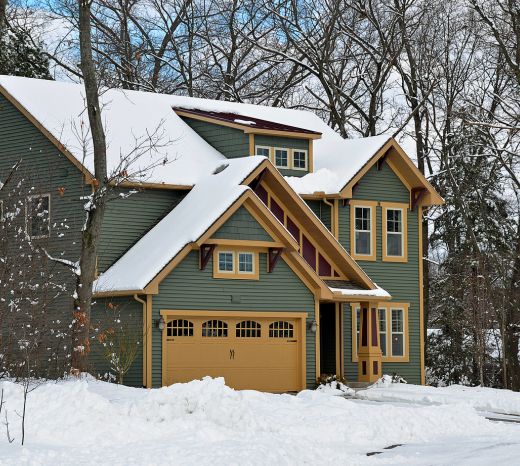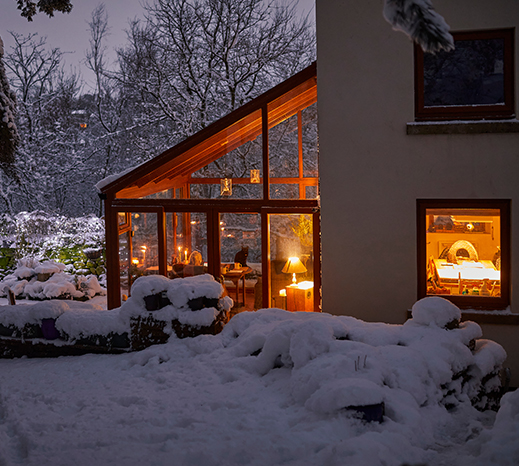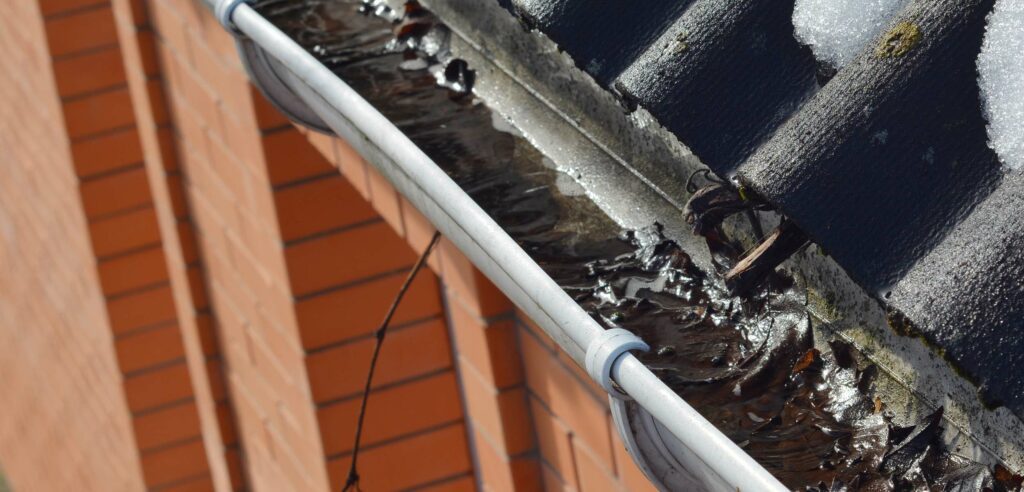We often don’t think about our gutters, which means they’re doing their job effectively—but if you’ve noticed they’re getting clogged frequ...
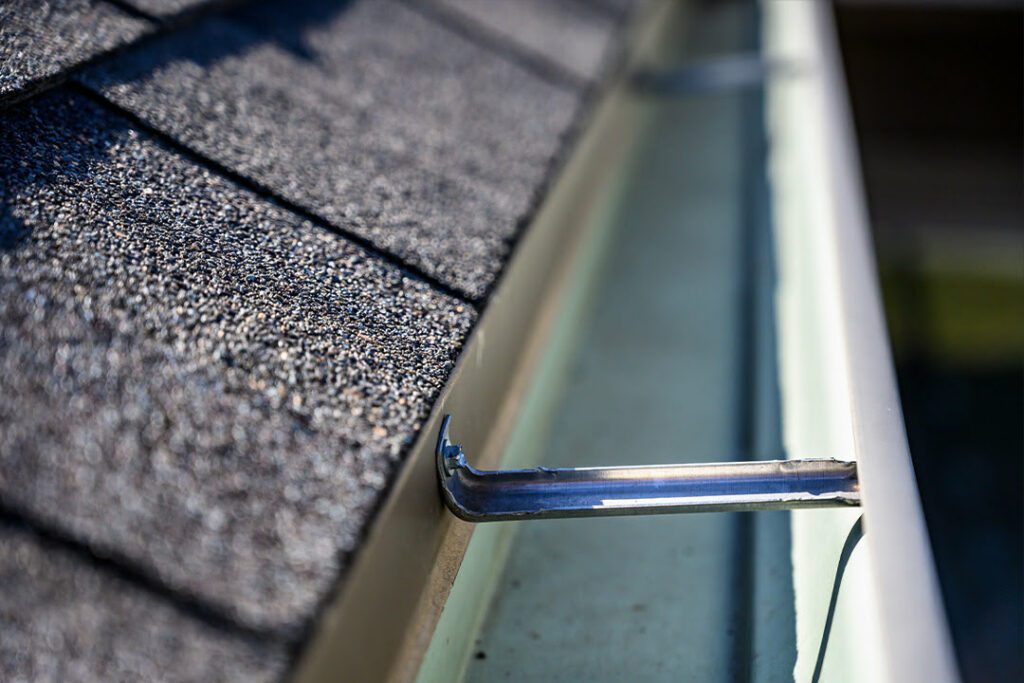
We often don’t think about our gutters, which means they’re doing their job effectively—but if you’ve noticed they’re getting clogged frequently or are unable to handle the amount of water coming down, it may be time to rethink the size of your gutters. Below, we’ll go over the types and sizes of gutters and how you can identify the right size for your home.
Gutter maintenance can be intimidating, but it doesn’t have to be. Our pros at Guns N Hoses have assisted countless homeowners with gutter repairs or replacements, and we’re happy to share our knowledge with you. Contact us for a complimentary consultation!
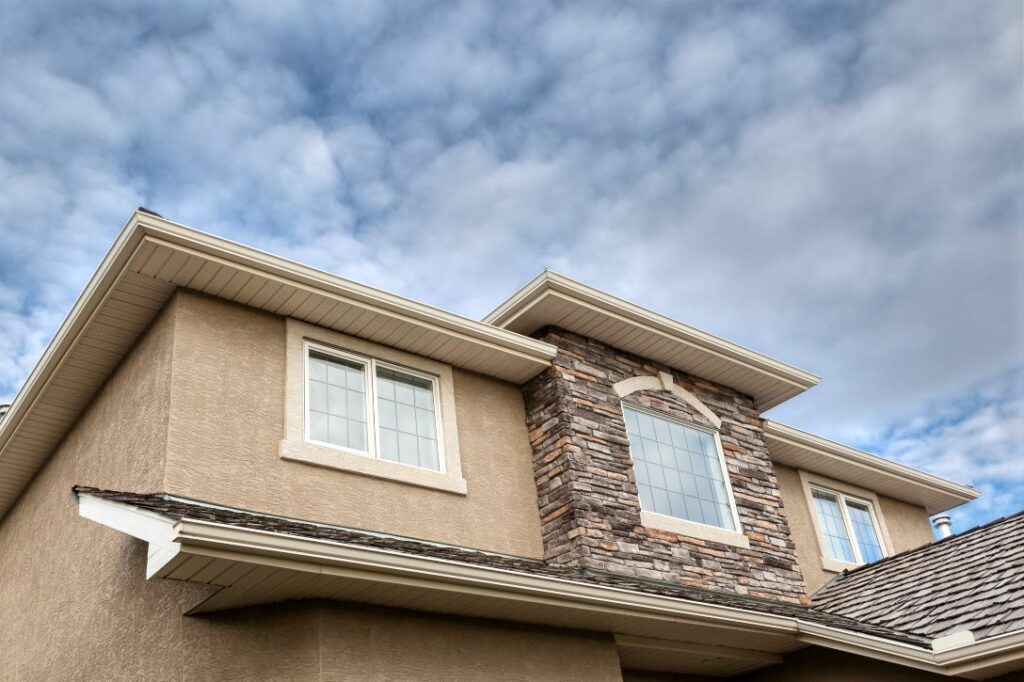
Types of Gutters
There are four common materials used for gutters, each with their own advantages and disadvantages. These include:
- Aluminum—aluminum gutters boast a lifespan of up to 30 years if maintained properly, are low maintenance, and resistant to corrosion. Additionally, this material is highly resistant to extreme temperatures (like the highs and lows we see throughout the seasons in Alberta).
- PVC—vinyl, or PVC, is often used due to its wide variety of colour options and is low in cost. However, PVC material can easily become brittle in very cold temperatures, causing it to break or crack if snow or other things fall on it (meaning more frequent repair costs).
- Galvanized Steel—galvanized steel is known for its durability and ability to resist corrosion. However, if not properly maintained, it can rust, leading to costly repairs.
- Copper—the durability of copper and its non-corrosive properties make this material highly sought after among those living by the sea (since salty air can cause rapid corrosion of other common gutter materials). However, copper is one of the most expensive materials to use for your gutters and may not be necessary for Alberta’s dry inland climate.
Styles of Gutters
There are 2 main styles of gutters used on residential properties:
- K-style: the most common gutters come in the K-style as they’re affordable and resemble a home’s crown molding, which provides extra aesthetic appeal. These gutters are designed to handle high volumes of water and are extremely durable.
- Half-round: the half-round style is seen on older homes and has a more rustic look. However, this style is often more expensive and less durable than the K-style. Half-round gutters are also less popular, as they cannot hold such large volumes of water.
Why We Choose 5-Inch Seamless Aluminum
Guns N Hoses uses 5-inch Seamless Aluminum for gutter installations. Why? As mentioned above, aluminum gutters can last up to 30 years with proper maintenance. Also, proper maintenance for these gutters is minimal and only requires cleaning out any leaves or debris when you notice them accumulating.
Aluminum gutters never need to be painted and won’t rust, making them the best choice for a ‘set and forget’ installation. We also take it one step further by using a specialty finish on the aluminum—with a guarantee of no chips, cracks, or peels for 20 years! This helps to reduce maintenance costs and increases the property value of your home.
We typically use 5” gutters in Calgary and the surrounding area (as this is considered the standard size for homes in the region). This size is adequate for the amounts of rainfall normally seen in Southern Alberta. However, other sizes are available—and since we offer custom fits for each home, it helps to know whether you might need something else.
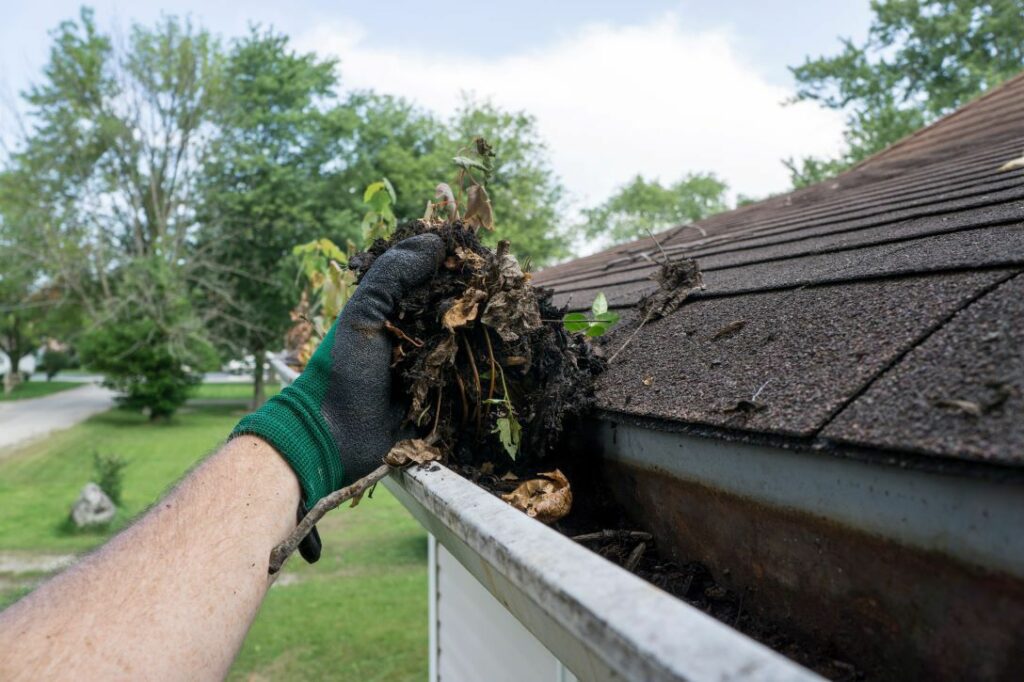
How to Determine the Right Size Gutters for Your Home
Now that we know a bit more about the types of gutters and why aluminum is the most common choice, how do you figure out what size you need? Let’s figure it out together.
Other Common Sizes For Gutters
Gutters typically come in 4 different sizes, but this depends on your home and the climate you live in. Most commonly, homes have a 5 or 6 inch gutter system installed, but other sizes can range between 4 and 7 inches.
The downspout that’s connected to the gutters, carrying the water down, also comes in 2×3 inch or 3×4 inch sizes.
Calculating Your Gutter Size
Now that we know the different types and sizes of gutters, it’s time for the big question—how do you know what size you need? Here’s how to calculate the best sized gutters for your home.
Calculate the Drainage Area of Your Roof
The first thing you’ll want to do in calculating your gutter size is to find out how much drainage area your roof has. The method you use will differ for differently built roofs:
- Simple gable-end roofs: these roofs only require two calculations to figure out the drainage size. You can do this by multiplying the length and width of each slope and adding them together.
- Intersecting or hip roofs: for roofs with more than 2 slopes, you will want to add up the area (length x width) of each slope to get the total drainage area of your roof.
Finding Your Roof Pitch & Maximum Rainfall Intensity
Once you have your total drainage area, you’ll have to account for the roof-pitch factor and the maximum rainfall intensity.
- Roof-pitch factor: the amount of rainfall collected on a roof is greater with steeper roof pitches. To measure this, use a 2-foot level and a tape measure. Holding one end of the level against the roof, make sure it is level, and measure the distance between the roof and the underside of the level at the 12-inch mark. This gap gives you the number needed to multiply for future calculations:
- A 12- or higher inch gap with a 12-inch run = 1.3
- A 9- to 11-inch gap with a 12-inch run = 1.2
- A 6- to 8-inch gap with a 12-inch run = 1.1
- A 4- to 5-inch gap with a 12-inch run = 1.05
- A flat to 3-inch gap with a 12-inch run = 1
- Maximum Rainfall Intensity: although Alberta isn’t known for extreme rain events, the province does have a maximum average of .47-inches of rain in a 60-minute period.
Gutter Sizing
So now you have your 3 numbers—the total drainage area of your roof, the roof-pitch factor, and the maximum rainfall intensity (.47in for Alberta). Using these numbers, you can now find the right size gutters for your roof.
To do this, multiply your drainage area by the roof-pitch factor and rainfall intensity—for example, if you have a 1000 sq ft. drainage area, with a 10-inch-12 pitch factor (1.2), and the rainfall intensity is .47 inches per hour, your equation would look like this: 1000 x 1.2 x .47.
Now, we know math isn’t everyone’s strong suit (especially when you’re trying to do it on the roof)—and since our pros are trained to size gutters appropriately for different homes, we’re always available to make sure you get the right size. Contact us and one of our professionals would be more than happy to help you find the ideal gutters for your home.
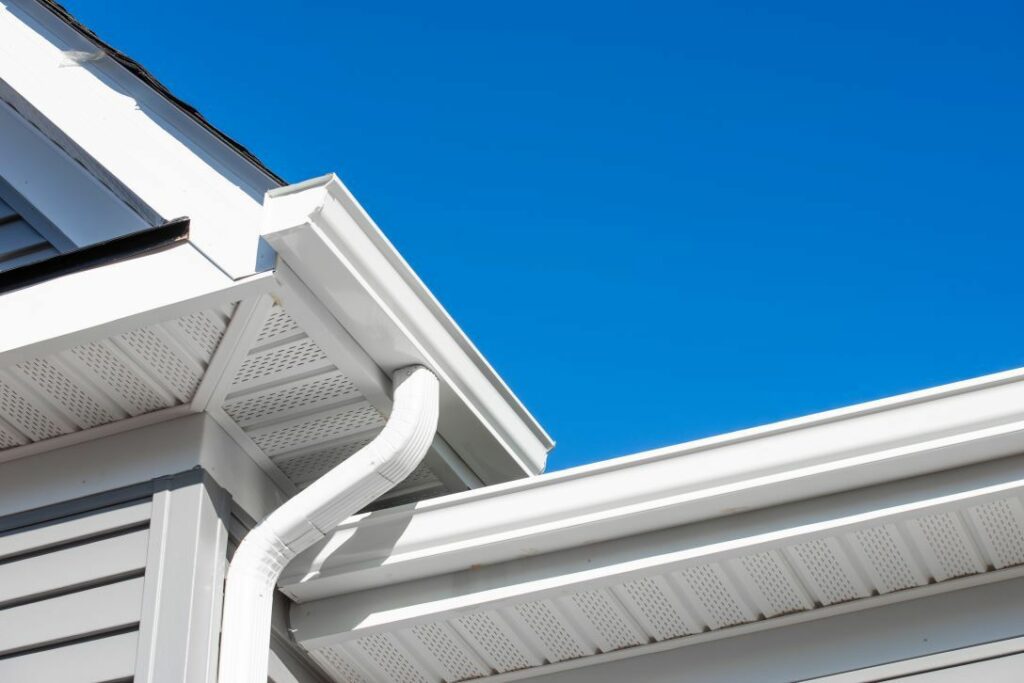
Oversized vs. Undersized Gutters
Sometimes, sizing your gutter leaves you with two options—either sizing up or sizing down. In this case, we recommend sizing up.
Benefits of Oversized Gutters
Sizing up your gutters does cost a bit more, but there are reasons it’s recommended:
- Larger gutters have the ability to handle much more rainwater and debris, reducing the risk of clogging and preventing water damage.
- Larger gutters work better with more complex gutter systems and roofs and drain more efficiently.
- Upsizing your gutters can also enhance the aesthetic appeal of your home.
Drawbacks of Undersized Gutters
Although saving some money at the front end by choosing a smaller gutter size can be appealing, it does have its disadvantages. If the gutters on your home are too small for rain and debris capacities, this can increase clogging within the gutter system as it cannot drain quickly enough. This allows water to build up on your home, or fall out the gutters close to your foundation, which can cause serious water damage and require costly repairs.
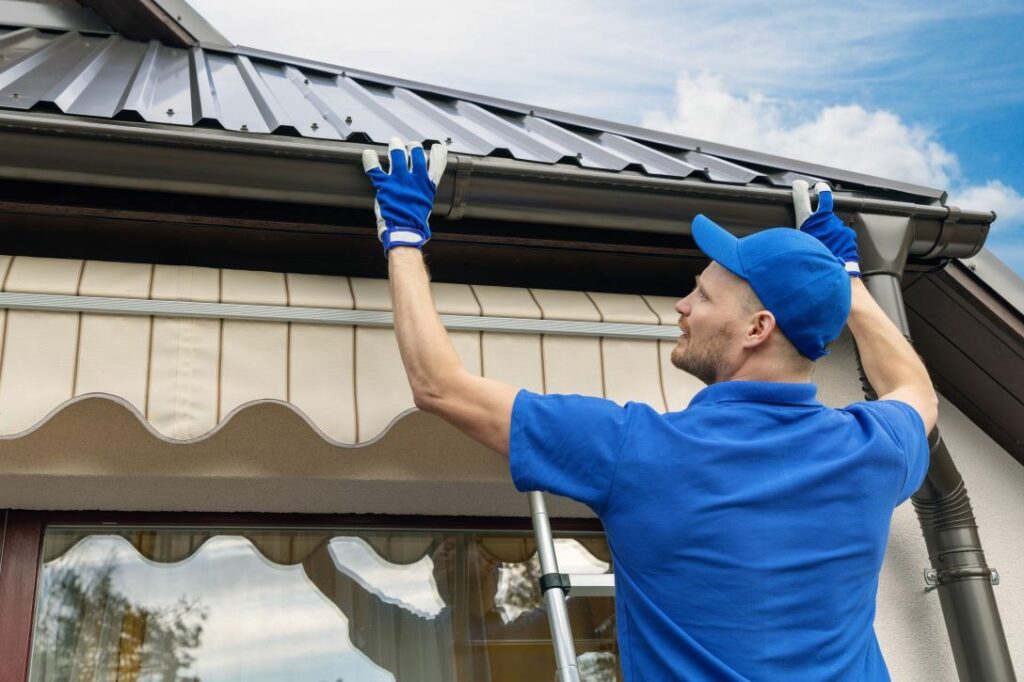
Get the Right Gutters for Your Home
Now that you have a better idea of the different kinds of gutters that exist and the size you might need for your home, you can feel confident about calling a professional to install them. Our team of experts who have serviced over 5500 homes in southern Alberta will be happy to confirm your choice or recommend the most effective drainage system for your roof. Contact us at Guns N Hoses to have your questions answered.
